Oakleaf Hydrangea, Oak Leaf Hydrangea

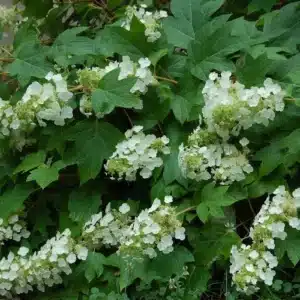
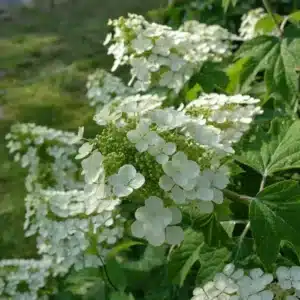
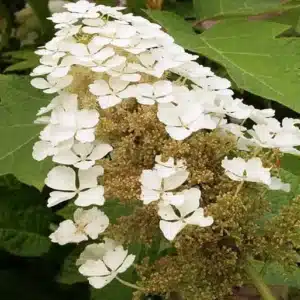
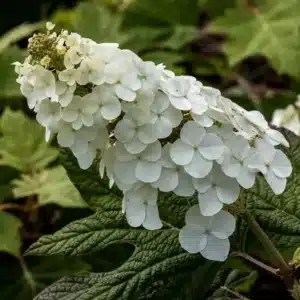
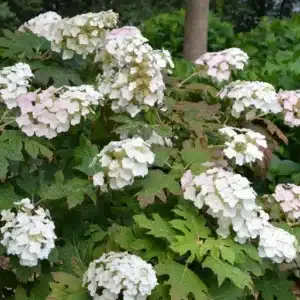

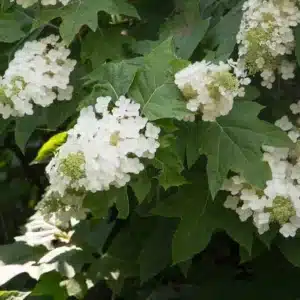
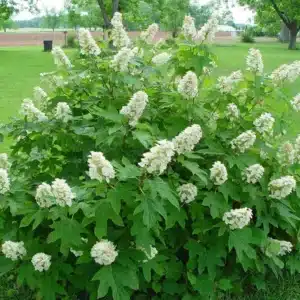
Amend soil with organic matter and mulch well to retain moisture. Choose a site that receives morning sun or sun throughout the day. Ensure the site is well drained and space plants 6’–8’ apart. Moisture needs are moderate and optimal soil pH is acidic or neutral. Oakleaf hydrangea is resistant to drought but will not tolerate “wet feet” and can be susceptible to root rot if the soil remains soggy for even a short period. Propagate oakleaf hydrangea by seeds or cuttings. Cuttings are generally easy to root and propagation is successful from spring to early summer because an oakleaf hydrangea stem segment will uniquely continue to produce softwood shoots for several months. Trim off one half of the leaf surface from one-node cuttings and dip in a rooting solution prior to inserting in potting soil.
Morning sun is best for flowering and supplemental water will be required in drought situations. Oakleaf hydrangea will take full shade but the leaves will be the main interest. This shrub will suffer in full sun in extreme heat conditions and be susceptible to sunscald, chlorosis in alkaline soils, and winter dieback. Weak, brittle canes may be broken in wind or by ice.
The fertility requirements of oakleaf hydrangea are moderate. Broadcast with a balanced 10-10-10 granular fertilizer around the base once in the spring and once in the summer (1.5 ounces for every 10 feet). A regular application of compost as a top dressing will also be helpful in maintaining the soil’s fertility level. Applications of iron and/or sulfur may be required in areas with high alkaline soils. A soil test is recommended and will be helpful in determining the fertilizer needs especially in high alkaline soils.
The blooms of oakleaf hydrangea occur on old wood. Prune if needed immediately after blooming. Little pruning is necessary but winter damaged stems may be pruned in early spring. Canes may be cut to the ground every two to three years to maintain a smaller shrub size but this practice will eliminate the attractive, naturally peeling bark that occurs on older canes.
Oakleaf hydrangea is generally pest free. Aphids may attack new growth and can be controlled with a powerful spray of water every other day. Mites typically attack oakleaf hydrangeas in dry weather causing distorted new growth or scorching along the leaf edges. A forceful spray of water every day for three days along with regular watering will help to prevent mite attacks. An application of insecticidal soap may be necessary if the aphids or mites continue to attack the plant. Oakleaf hydrangea may be susceptible to leaf blight or powdery mildew in areas of poor drainage. Take steps to improve the site’s drainage prior to planting.















